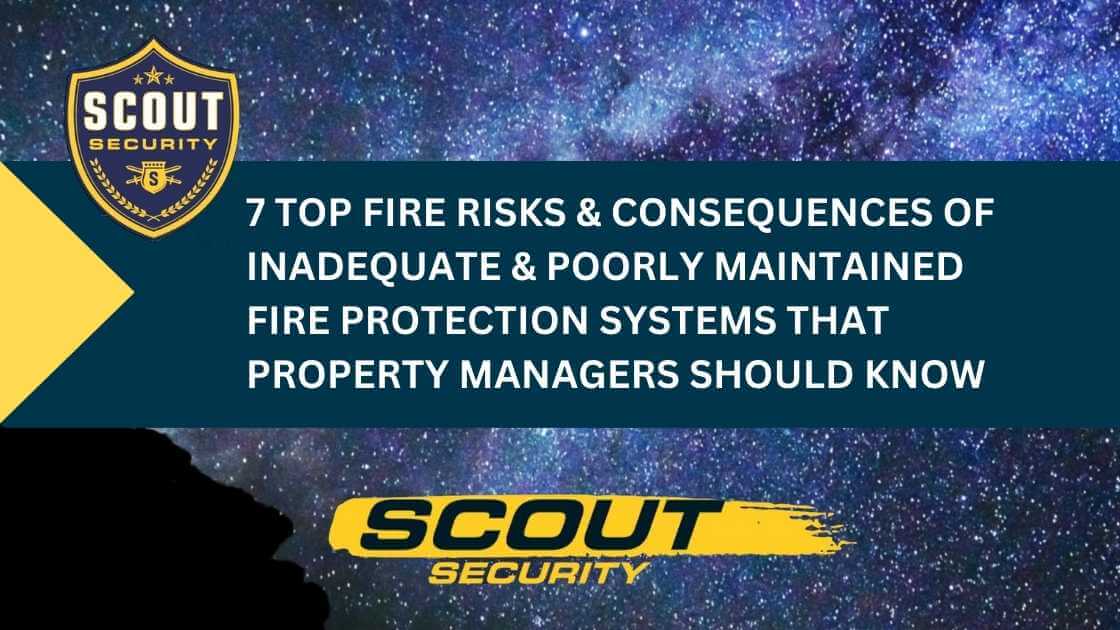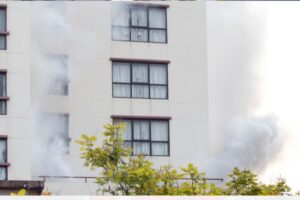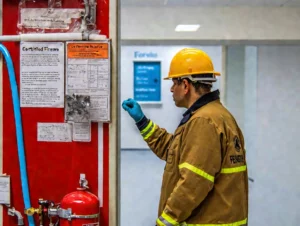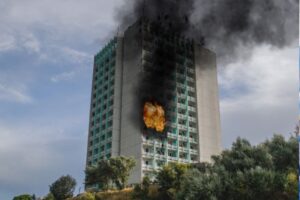Inadequate fire safety measures including the lack of or poorly maintained fire alarm or sprinkler system/s will increase the risk of fires in your property. This can lead to significant damage to your assets, reputation, and revenue due to violations, hefty penalties, accidents, and even loss of life. As a property owner or manager, following fire safety regulations and requirements is important in ensuring your business’s success.
Here are the top fire safety risks and dangers of not:
- Adhering to fire safety requirements
- Installing and/or maintaining your fire protection system in good working condition
- Enforcing an effective fire safety plan
We have certified fire watch guards who are highly trained in identifying and preventing fire hazards on your property as well as in dealing with emergency situations. We serve property managers and business owners in the Colorado Springs and the Denver Metro areas. Hire us now!
Top 4 Fire Safety Risks: Potential Fire Hazards In Commercial Buildings
Regular testing and maintenance of fire safety equipment in your building to make sure that they are fully operational is the key to preventing fire hazards. Ensure that they are in compliance with your local fire safety requirements and other applicable laws and regulations.
#1. Lack Of, Non-operational, And/Or Unmaintained Fire Safety Equipment
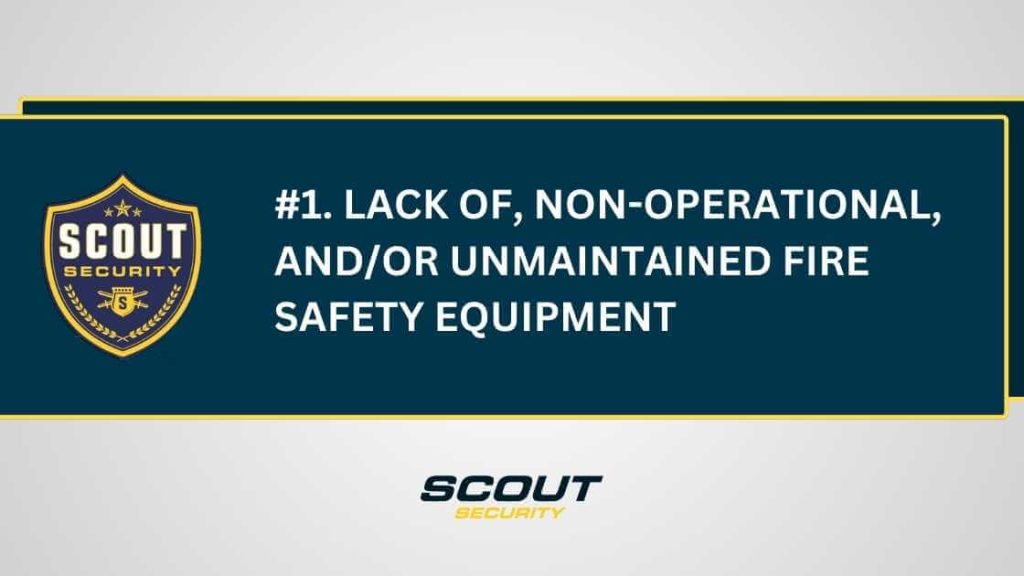
Failure to install fire safety equipment will compromise the safety of your property and endanger the lives of the building occupants. Fire safety devices help in detecting early signs of fire and in suppressing its spread. They help minimize damage to your property aside from lowering the risk of fire-related injuries and deaths by alerting occupants and assisting them in evacuating safely.
According to the Centers for Disease Control & Prevention (CDC), the rates of civilian fire deaths and injuries are lower when there are fire sprinkler systems installed compared to when there are none.
The CDC also recommends high-occupancy residential, commercial, and industrial structures to have an automatic sprinkler system to promote proactive fire prevention.
Examples of Fire Safety Equipment
- Smoke alarms & detectors
- Fire alarm systems
- Fire sprinkler systems
- Fire extinguishers
- Fire suppression systems
- Emergency & exit signs
- Fire hose reels
- Fire blankets
You also need to make sure that your fire safety devices are up-to-date and in compliance with NFPA and other regulations.
In addition, unmaintained or non-operational fire safety equipment is just as bad as having none at all. Take note that identifying problems with your fire protection systems cannot be done through mere visual inspections.
Jams and blockages may happen when you leave your fire protection systems dormant, especially inside pipes, which certified professionals can effectively identify. It is important that you have your fire safety devices inspected and maintained regularly to make sure that they are fully operational.
Deploying trained fire watchers during fire system maintenance activities when your system is inoperable for a total of four hours or more during a 24-hour period is required by the law.
#2. Poorly Developed Fire Safety Plans & Inadequate Employee Training
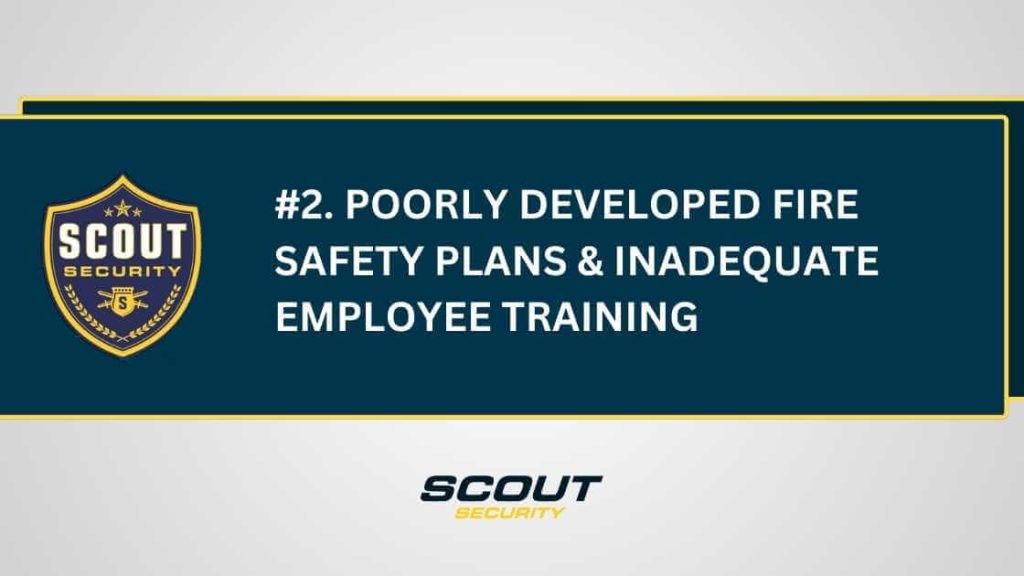
Creating an effective fire safety plan which includes emergency action plans will help in reducing damage to your property and accidents during fire outbreaks. Evacuations should be properly planned to get everyone out safely in an orderly manner. This will also make emergency response easier and put out fires faster before they spread further.
Make sure that emergency lights and exit signs are working properly to ensure organized evacuation. Fire safety equipment should also be easily accessible.
An effective fire safety plan also involves identifying vulnerabilities in your building and knowing how to properly respond to outbreaks. This is where adequate employee fire safety training comes in to organize actions during emergencies. Employees should:
- Understand their roles and responsibilities during emergencies
- Know how to recognize fire hazards
- Be trained on the basics of fire extinguishers
Take note that there are specific NFPA and OSHA standards covering fire safety training requirements for different industries. For instance, businesses handling hazardous or flammable materials will have more stringent fire safety training rules including the construction industry. Installing a comprehensive fire protection system will be useless if your employees do not know how to use the devices.
We recommend always updating your emergency action plan every time there are changes, especially in your building’s layout and fire protection systems.
Also Read: 6 Things Landlords Should Do After a Fire in a Rental Property
#3. Building Code Violations
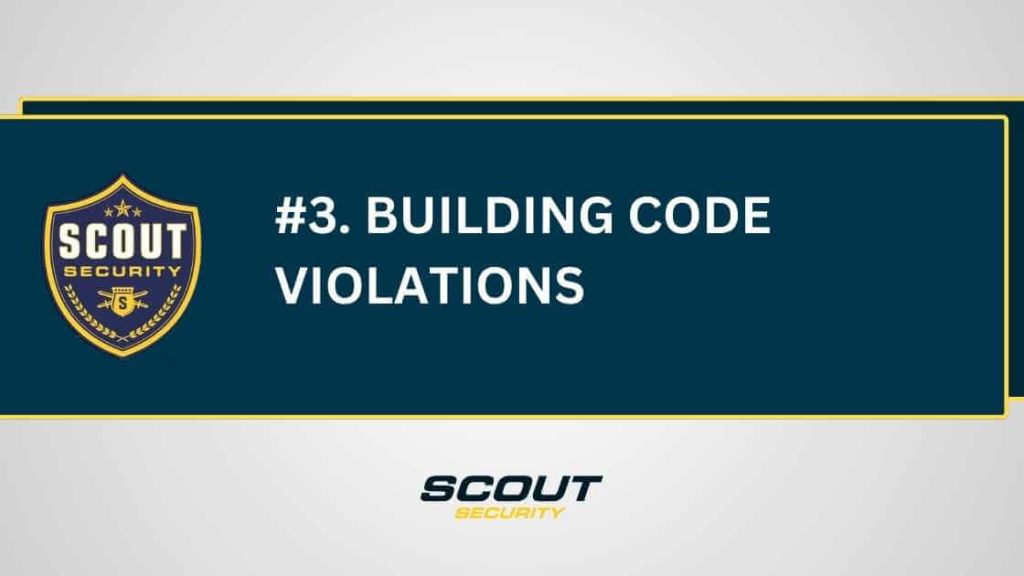
Your fire protection systems should comply with the requirements of the National Fire Protection Association (NFPA) in addition to your local fire safety requirements. These requirements may vary depending on the type of business you have.
Following these requirements will ensure that you will have a reliable fire safety plan that you can count on during emergencies. Besides, it is your responsibility to create a safe and habitable living space or working place for your tenants and employees.
Fire protection systems should be tailored to your building’s specific needs while meeting local building codes and regulations. They should be strategically placed to cover all areas and maximize efficiency.
Also Read: 11 Benefits of Hiring 24-Hour Onsite Fire Watch Guards for Your Business
#4. Improperly Stored Combustible and Flammable Materials
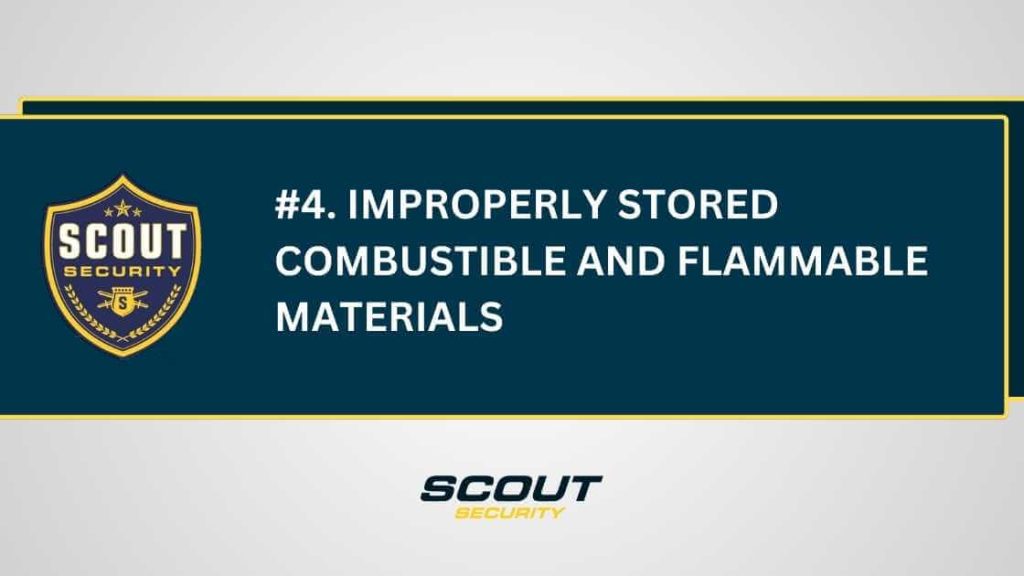
Flammable and combustible materials are among the greatest fire risks, especially in construction sites. They should have a designated storage location to avoid fire hazards. Hot work operations nearby can also ignite them even after several hours after the activity has been completed.
NOTE: The OSHA Standards for Welding, Cutting, and Brazing require fire watchers during hot work operations where there are combustible materials nearby.
Other Fire Safety Risks
- Not having a safe smoking area
- Misused or faulty electrical equipment
- Heating appliances
- Cooking
- Arson
Top 3 Consequences of Not Having a Fire Safety Plan & Violating Fire Safety Regulations
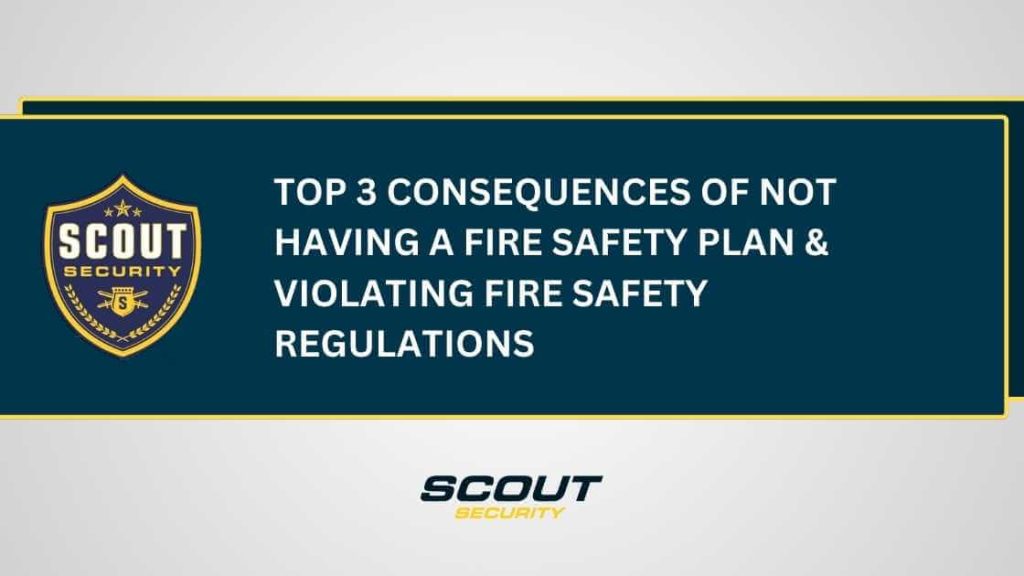
A poorly prepared or lack of a fire safety plan can result in further property and financial damage as well as liabilities including injuries or even death.
Fire protection systems are your first line of defense during fire emergencies before emergency responders arrive. Without them, your building will be prone to fires which can lead to significant property damage, financial losses, and loss of life.
#1. Costly Violations & Fines
Aside from an increased risk of fires, you will be facing hefty fines and penalties for violating fire safety laws and regulations. Local rules tend to be stricter and you might end up receiving severe punishments which can put your business at risk.
#2. Injuries & Loss of Life
Loss of lives is the worst consequence of not installing adequate fire protection systems and failing to plan evacuation procedures properly. Also, evacuation and emergency response cannot be done in an organized manner which increases the risk of injuries and deaths. If it is found out that it was the property owner’s or manager’s negligence that caused the fire, you can be sued for all of the damages and medical expenses.
#3. Business Disruptions
Financial losses due to business disruptions will add more to the costly penalties and legal fees you will be facing. Reputational damage is another unavoidable consequence that can lead to business shutdowns and you’ll end up losing everything.
Also Read: Top 8 Fire Safety Tips & Best Practices for Property Owners & Managers
FAQs
Creating an effective fire safety plan not only minimizes damage to your property and prevents significant financial losses. It also increases the building occupants’ chances of evacuating safely and making it out alive during emergencies.
The top causes of fire hazards include:
(1) Not having a fire protection system
(2) Unmaintained fire safety devices
(3) Poorly developed fire safety plans and evacuation procedures
(4) Lack of employee fire safety training
(5) Building code violations
(6) Improperly stored combustibles
Conclusion
Installing adequate fire protection systems and implementing a comprehensive fire safety plan is crucial to the success of your business. Effective fire safety plans start with installing compliant fire protection systems in your building along with hazard identification and proper mitigation. This helps monitor and eliminate fire hazards before they lead to catastrophic consequences and damage to your business.
Scout Security’s licensed fire watch security guards will be your eyes and ears when your building is left vulnerable to fire hazards. We help property managers in the Colorado Springs and Denver metro areas maximize safety and security to prevent potential damage and liabilities. Contact us now!

